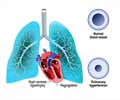
Researchers conducted a retrospective study of heart failure patients discharged from 11 hospitals across Utah between January 2011 and September 2012 to determine whether the use of an electronic discharge orders tool was associated with higher adherence to core measures—considered medical "best practices" in heart failure care—and lower hospital readmissions. As part of the Affordable Care Act's effort to improve quality while also saving taxpayers dollars, Medicare has recently started fining hospitals that have too many patients readmitted within 30 days of their discharge—a widely accepted marker of sub-optimal care. The electronic discharge tool, first piloted in 2010, was designed to cover all aspects of the discharge process and includes integrated decision-support tools and safeguards to guide clinicians through the recommended steps for heart failure patients.
"The tool was designed by our most skilled cardiovascular practitioners to mirror the workflow of the physician and provide evidence-based decision support for cardiovascular care," said Jose G. Benuzillo, MA, MS, a senior outcomes analyst at Intermountain Healthcare in Salt Lake City and the study's lead investigator. "Use of this tool reduces variation in practice between the most skilled and experienced specialists in cardiovascular care and more general practitioners who see cardiovascular patients more infrequently."
He said it has also improved communication between the patient and clinician by providing a clear, legible document that addresses all best practice orders, instructions and medications.
Adherence to the heart failure core measures was evaluated on three inpatient quality measures including provision of discharge instructions to patients, appropriate assessment of heart pumping ability and the prescription of evidence-based medications or documentation of contraindication. The primary outcome was readmission of discharged heart failure patients to the hospital within 30 days from any cause.
There were 2,409 inpatient hospitalizations that were eligible to measure readmission (also called indexadmissions) and adhered to at least one core measure. The discharge orders tool was used in 55 percent ofthese encounters. Full adherence to all three quality measures was higher among patients discharged withthe electronic tool. The observed readmission rate among patients discharged with and without theelectronic discharge orders tool was 15.5 and 18 percent, respectively. After adjusting for length of stay, age, sex and severity of illness, researchers found that the likelihood of readmission was even lower among patients discharged with the electronic tool.
Advertisement
Advertisement














